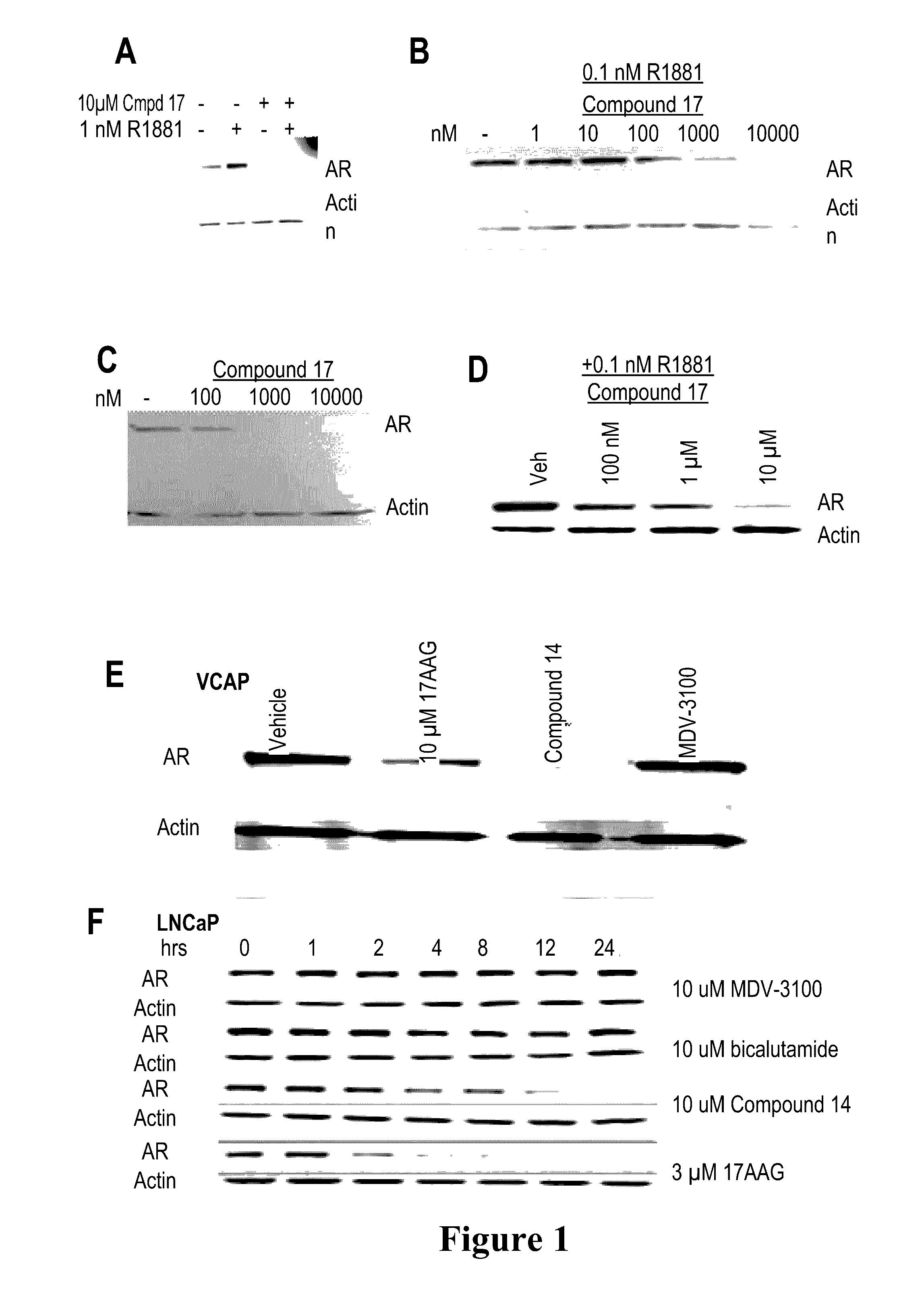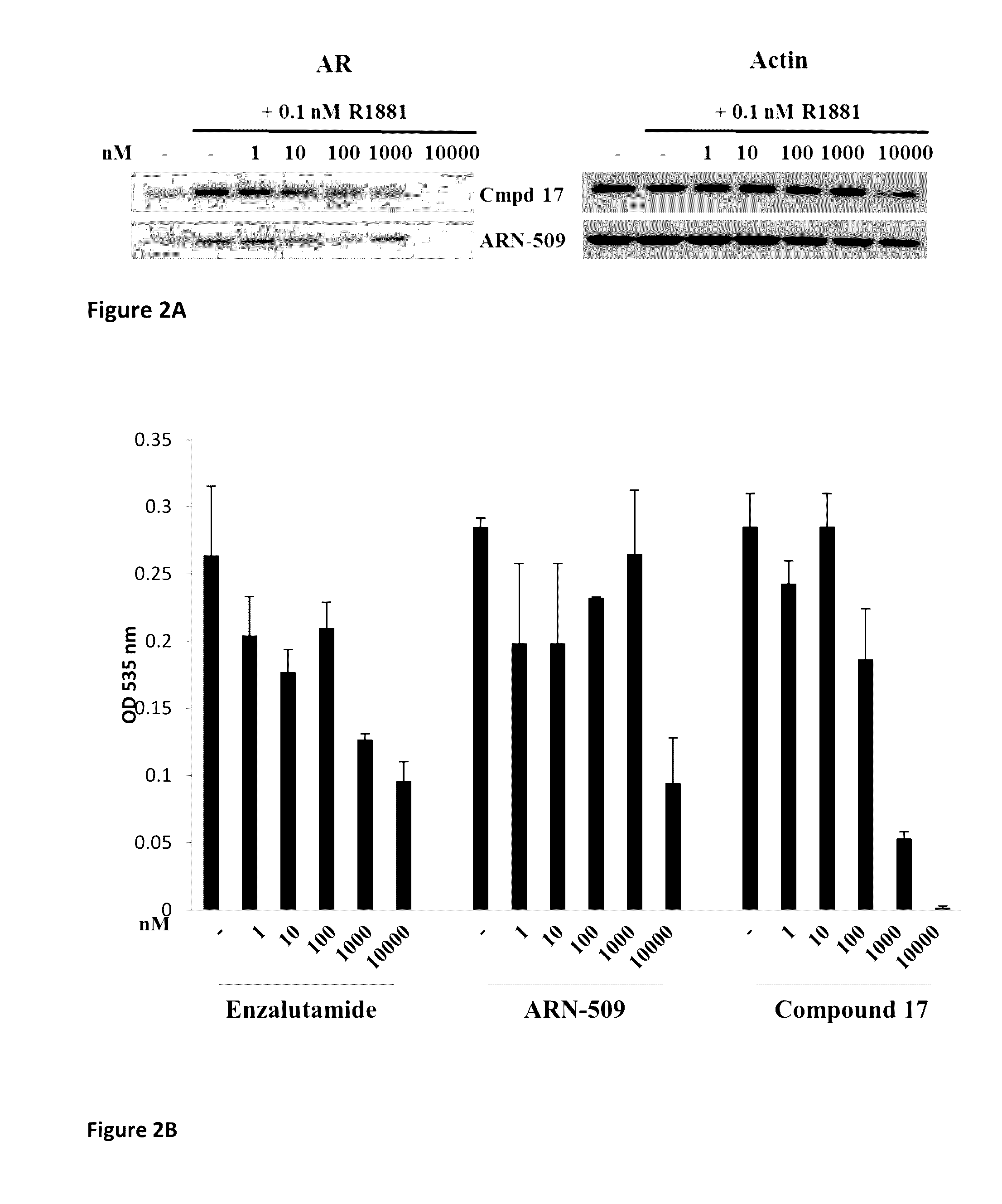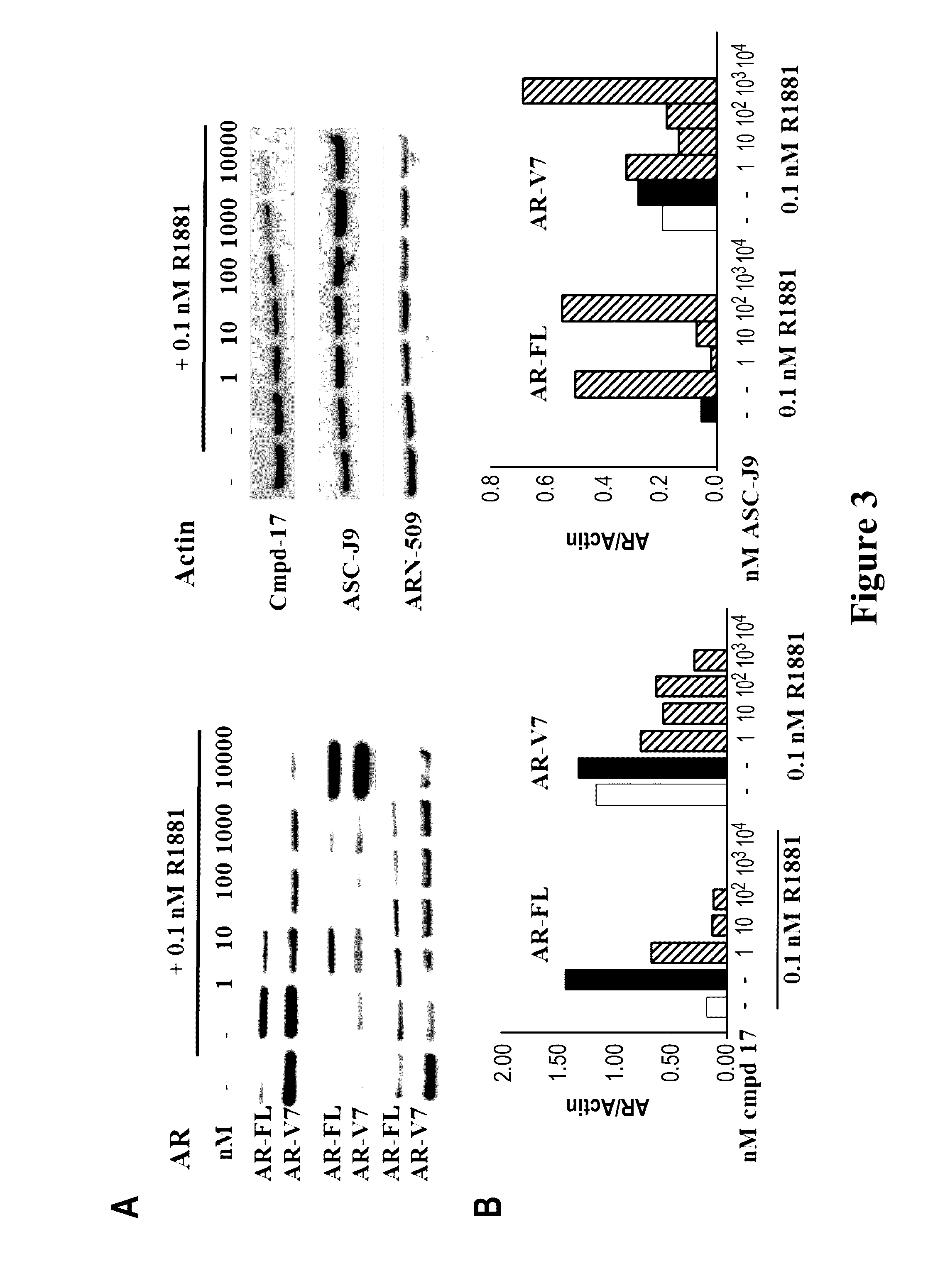Selective androgen receptor degrader (SARD) ligands and methods of use thereof
a technology of selective androgen receptors and ligands, which is applied in the direction of muscular disorders, drug compositions, sexual disorders, etc., can solve the problems of unfavorable sexual effects, unfavorable anti-androgens, and inability to inhibit growth, so as to inhibit the progression of prostate cancer, reduce the severity, and reduce the incidence
- Summary
- Abstract
- Description
- Claims
- Application Information
AI Technical Summary
Benefits of technology
Problems solved by technology
Method used
Image
Examples
example 1
Synthesis of (S)-3-(Substituted phenyl amino)-N-(4-nitro- or 4-cyano-3-(trifluoromethyl) phenyl)-2-hydroxy-2-methylpropanamides (Compounds 12-19)
[0514]
(2R)-1-Methacryloylpyrrolidin-2-carboxylic acid (2)
[0515]D-Proline (14.93 g, 0.13 mol) was dissolved in 71 mL of 2 N NaOH and cooled in an ice bath. The resulting alkaline solution was diluted with acetone (71 mL). An acetone solution (71 mL) of methacryloyl chloride (13.56 g, 0.13 mol) and 2 N NaOH solution (71 mL) were simultaneously added over 40 min to the aqueous solution of D-proline in an ice bath. The temperature of the mixture was kept at 10-11° C. during the addition of the methacryloyl chloride. After stirring (3 h, room temperature (RT)), the mixture was evaporated in vacuo at a temperature at 35-45° C. to remove acetone. The resulting solution was washed with ethyl ether and was acidified to pH 2 with concentrated HCl. The acidic mixture was saturated with NaCl and was extracted with EtOAc (100 mL×3). The combined extract...
example 1a
Synthesis of Compounds 14 and 17
Synthetic Scheme of SARDs 14 and 17
[0554]
[0555]Hydroxybromide 8 was used as an important intermediate which was reacted with aniline 26 after activating by NaH in THF solvent to produce 14. N-Alkylation of 14 was a microwave assisted reaction and performed under a basic conditions in using N,N-diisopropylethylamine (Hünig's base) to generate 17.
example 1b
Synthesis of Compounds 49 and 50
[0556]General Procedure:
[0557]Preparation of Compounds 49 and 50
[0558]A mixture of phenyl trifluoromethanesulfonate (500 mg, 2.21 mmol), palladium acetate (II) (50 mg, 0.22 mmol), (±) 2,2′-bis(diphenylphosphino)-1,1′-binaphthyl (317 mg, 0.66 mmol) and cesium carbonate (1.09 g, 3.31 mmol) in 50 mL of toluene were inertized with argon. Then, 4-nitroaniline (331 mg, 2.43 mmol) or 4-fluoroaniline (2.43 mmol) was added and the mixture was heated at 110° C. overnight. The reaction mixture was allowed to cool to room temperature and filtered through a pad of Celite®. The filtrate was diluted with CH2Cl2 and water. The phases were separated and the aqueous phase was re-extracted 2 times with CH2Cl2. The combined organic phases were dried over Na2SO4 and the resulting solution was dried over anhydrous Na2SO4 and purified with flash column chromatography as an eluent EtOAc / hexane (1 / 6, v / v) to give 4-nitro-N-phenylaniline or 4-fluoro-N-phenylaniline.
[0559]NaH o...
PUM
| Property | Measurement | Unit |
|---|---|---|
| Molar density | aaaaa | aaaaa |
| Molar density | aaaaa | aaaaa |
| Molar density | aaaaa | aaaaa |
Abstract
Description
Claims
Application Information
 Login to View More
Login to View More - R&D
- Intellectual Property
- Life Sciences
- Materials
- Tech Scout
- Unparalleled Data Quality
- Higher Quality Content
- 60% Fewer Hallucinations
Browse by: Latest US Patents, China's latest patents, Technical Efficacy Thesaurus, Application Domain, Technology Topic, Popular Technical Reports.
© 2025 PatSnap. All rights reserved.Legal|Privacy policy|Modern Slavery Act Transparency Statement|Sitemap|About US| Contact US: help@patsnap.com



